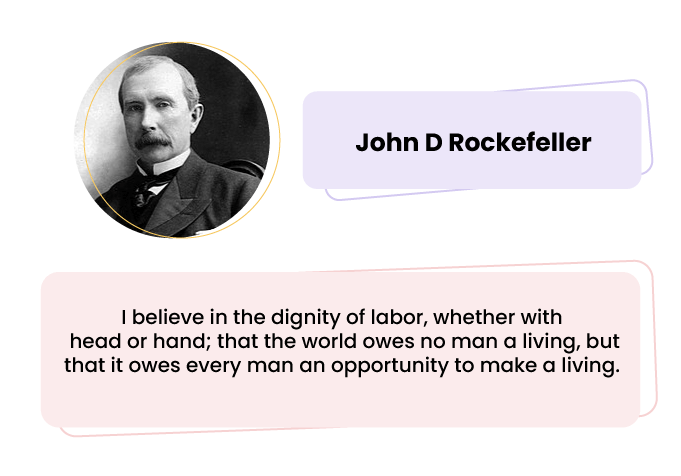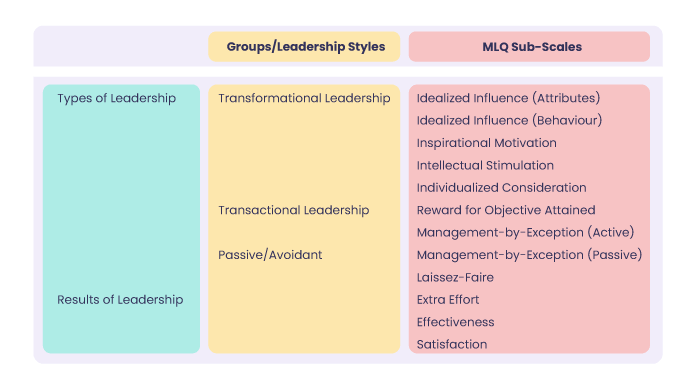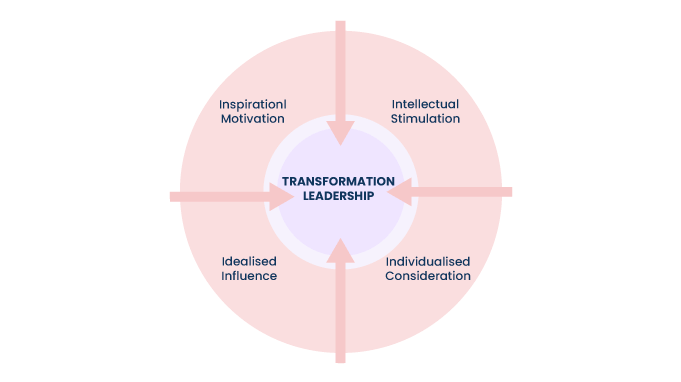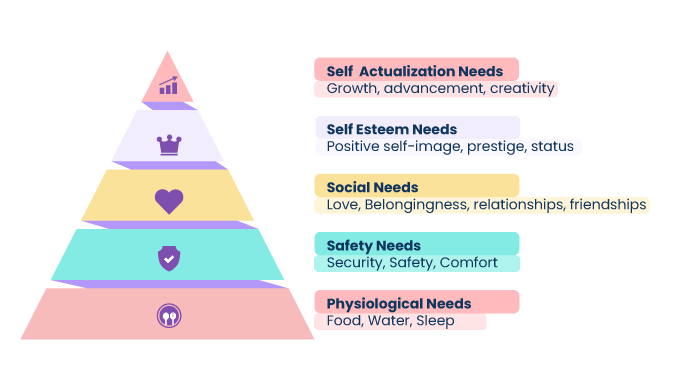Why Leaders Encourage Transformational Leadership in 2024
In recent years, the term transformational leadership has risen to the surface. Organizations in all industries see rapid change in today’s digital era.
Transformational leaders know how to encourage, inspire and motivate employees. They help employees to perform in ways that create meaningful change. Every kind of leader motivates challenges and develops employees in different ways. Their corresponding styles can all inspire different outcomes.
Frances Hesselbein and Paul M. Cohen, in their book “Leader to Leader” (1999, p. 263), states that organizations that take the time to teach leadership are far ahead of the competition.
In this article, we will dig deeper into the transformational leadership style. We will also look at how you can apply transformational leadership in your business.
- What is Transformational Leadership?
- Examples of Transformational Leaders
- Transformational Leadership Model
- What are the Four Components of Transformational Ledaership
- 5 Most Important Charecteristics of a Transformational Leader
- Importance of Transformational Leadership in Business
- How to Apply Transformational Leadership in your Company?
- Difference Between Transformational and Transactional Leadership
- Final Note!
What is Transformational Leadership?

Transformational leadership is a type of leadership style. Transformational leaders inspire and motivate employees to build a creative work culture. In transformational leadership theory, leaders help successfully transform employees. They make employees ready to respond to any uncertainty with innovation and courage.
Transformational leaders believe in agility. They transform their work processes from time to time to grow and shape their future.
In today’s time, we witness change and unpredictability constantly, from digital transformation or changing trends in the global market. As per the report by market and markets, the global digital transformation market size is expected to grow from USD 469.8 billion in 2020 to USD 1009.8 billion by 2025, at a Compound Annual Growth Rate (CAGR) of 16.5% during the forecast period.
Major market growth drivers are mobile devices, apps, and the increasing adoption of cloud services. Leaders face challenges in adapting a sustainable leadership style due to such unpredictability.
Transformational leaders are visionary and agile. They have a knack for understanding the needs and uncertainty of the future.
Let’s understand this better from a few real-life examples.
Examples of Transformational Leaders
Transformational leadership might only come around once or twice in a lifetime. Here are examples of a few famous transformational leaders that have made an impact.

Steve Jobs, the co-founder of Apple, was a transformational leader in the truest sense. He was creative, passionate, and visionary. Jobs encouraged his colleagues to realize the need for innovation. He embraced long-term and broad views to achieve the company’s objectives.
He was a visionary who always inspired his followers, stakeholders, and clients with a clear vision. It helped him to create something different from others, be creative and be a trend-setter.

Nelson Rolihlahla Mandela was a South African anti-apartheid revolutionary, statesman, and philanthropist. He served as President of South Africa from 1994 to 1999.
Nelson Mandela was a transformational leader. He motivated his followers to exceptional accomplishments. Nelson Mandela used charisma, inspiration, individualized attention, and intellectual stimulation to motivate.

Jeffrey Preston Bezos is an American business magnate, media proprietor, and investor. Bezos is the founder and executive chairman of Amazon. Bezos always understood that a successful business is about focusing on the customer.
He offers visions of what the world’s largest online retailer would become and how it could be delivered. He believes in building short-term goals to achieve things on a grander scale.

John D. Rockefeller is one of the most influential industrialists of the 19th and 20th centuries. He was undoubtedly a transformational leader. His investment in kerosene ended the country’s reliance on whaling. He consolidated and transformed the US fledgling oil and gas industry.
Rockefeller was a successful employer too. He was noted for his philanthropy of corporate social responsibility in action.

Wilmot Reed Hastings Jr. is the co-founder, chairman, and co-chief executive officer of Netflix. Netflix started as a mail-order DVD service and is now a multi-billion-dollar subscription-based entertainment service.
Hastings has revolutionized the viewing habits of millions of people worldwide. But his most outstanding achievement is his management style. Rather than micromanaging, the company focuses on total autonomy for workers. The company allows employees unprecedented independence in exchange for market-leading and generation-defining products.

Transformational Leadership Model
The concept of transformational leadership started with James V. Downton in 1973. The idea was expanded by James MacGregor Burns in 1978. In 1985, researcher Bernard M. Bass further developed the concept. He included ways to measure transformational leadership success.
The transformational leadership model encourages leaders to demonstrate the following-
- Authenticity,
- Strong leadership abilities, and
- Inspire employees to follow.
Transformational leadership is measured through the Multifactor Leadership Questionnaire (MLQ). MLQ is a survey that identifies different leadership characteristics. It is based on examples and provides a basis for leadership training.

The MLQ was later developed to a current version of the survey, the MLQ5X. The current version of the MLQ5X includes 36 items broken down into nine scales, with four items measuring each scale. John Antonakis and his colleagues valeted and checked MLQ5X for its reliability.
What are the Four Components of Transformational Leadership?
Transformational leaders don’t start by denying the world around them. Instead, they describe a future they’d like to create instead. - Seth Godin.
To be a better transformational leader, one must understand the four elements that drive this leadership style.

The four elements of transformational leadership are:
1. Idealized Influence
Idealized influence breeds leadership behavior. It helps followers to view them as role models.
- Transformational leaders are idealized when they are considerate towards others. They are also idealized when they keep the needs of others over their interests.
- These leaders develop a shared vision with their team members. They focus on team-building, setting higher levels of moral and ethical behaviors.
- They influence the team members by imbibing values and strong work ethics.
- Transformational leaders understand the moral consequences of decisions made.
2.Individualized Consideration
Individualized consideration is understanding the employees’ needs. These leaders are considerate of employees’ actions and guide them by listening.
- Transformational leaders can be considerate by being more compassionate towards their employees. They can build strong interpersonal relationships with them.
- These leaders keep the employees’ well-being in mind.
- They mentor employees in their professional and personal development.
3. Intellectual Stimulation
Intellectual stimulation in this leadership style means encouraging innovation. It is also about creative thinking and problem-solving skills.
- Transformational leaders believe in sharing all the information with their employees. They believe in transparent leadership.
- They openly communicate to generate more ideas and build analytical thinking. Open communications help the organization to get more perspectives during decision-making.
4.Inspirational Motivation
- Transformational leaders inspire employees. They also motivate them through excellent communication skills, honesty, and integrity.
- They lead by example and focus on the other person and the task at hand.
- These leaders are confident and optimistic about the future. They talk enthusiastically with their employees.
- Transformational leaders connect with everyone and share their vision.
5 Most Important Characteristics of a Transformational leader

1. Interpersonal Skills
- Transformational leaders have strong interpersonal skills.
- These leaders have strong communication skills. They show the right attitude while conversing with people.
- They listen to people and give effective feedback.
- Transformational leaders ask relevant questions and also provide the necessary solutions.
- They are often eccentric and draw energy from their personality.
- These leaders are non-judgemental. They are mindful of the environment, which reflects in their behavior and actions.
2. Creative and Innovative
- Transformational leaders create and think outside the box.
- They always look out for creative solutions and innovative ideas.
- These leaders build an environment that is inclusive and positive.
- Transformational leaders believe human resources to be an asset. For these leaders, human resources are a collective source of creativity. Human resources help everyone bring innovation and transformation.
- They believe in a culture that gives everyone room to discuss ideas and share their perspectives.
3. Adaptability
- Transformational leaders are agile and quick thinkers.
- They adapt to the changing scenarios in no time. These leaders take immediate actions to bring stability.
- Transformational leaders have a knack for envisioning the uncertain future. They experiment to transform into a sustainable workplace.
- The way one responds in crisis says a lot about them. They can withstand the instability and unpredictability that the business world brings.
- Transformational leaders thrive in adverse situations and create new opportunities by being positive.
- These leaders believe in strategic leadership. They enable the right strategies to adapt to various changes.
4. Curiosity
Curiosity is one trait that is so crucial for any leader. Curiosity creates an intelligent mind and an outlet for immense possibilities.
- Great leaders are always curious. They hire brilliant minds who could fulfill the needs of the organization. Rightly engaged employees can bring practical solutions to a given problem.
- These leaders are always searching for better opportunities. They keep tabs on the current trends to move forward.
5. Risk Takers
The road to transformation has many bumps and uncertainties. Not every great idea comes to fruition.
- Great leaders are those who are ready to take a chance and believe in their decisions.
- These leaders understand the calculated risks involved in every business decision.
Importance of Transformational Leadership in Business

Implementing transformational leadership has many positive outcomes. It is not only beneficial in workplaces but in other situations as well. The four components of transformational leadership associate with positive emotions in the workplace.
The four components are also associated with higher job satisfaction and employee effectiveness. Intellectual stimulation and inspirational motivation bring positive emotions such as enthusiasm and happiness.
A transformational leader inspires people and follows their self-interest. Hence, aligning the teams of the organization towards transformational leadership is vital. It will lead to higher job satisfaction, employee morale, and motivation.
You can also look at the Entrepreneur Lesley Hayes ted talk video. Here she speaks about how you can be a better leader for your business. She also talks about how transformational leadership behaviors can help one grow.
How to apply Transformational Leadership in your company?

Transformational leadership is all about empowering your employees. It is about inspiring them to achieve remarkable results.
Here are some of the ways you can apply transformational leadership in your company-
- Be transparent.
You won’t be open about everything, but it’s essential to offer transparency to your employees. If employees are kept in the dark about everything, they’ll be less likely to share their thoughts and ideas.
Keep your team informed about any significant changes within the company. Also, make sure you clearly outline and set goals to achieve them effectively.
- Meet your employees’ needs.
One of the most notable motivational theories is Maslow’s hierarchy of needs.

Maslow’s hierarchy of needs includes five different levels-
- Self-actualization,
- Esteem,
- Belongingness,
- Safety, and
- Physiological.
Leaders must meet these five levels of needs to ensure effective employee performance. Fulfilling these needs, employees become more loyal and also perform beyond expectations.
- Listen to team concerns.
As a leader, you need to show your employees that you care. Hence, When a team member comes to you with a problem or concern, always take time to listen. Showing them empathy will make them open up to you more.
- Set a good example.
As a transformational leader, you must act like a role model and lead by example. Be sure to show commitment and dedication to achieving common goals. Also, make sure to create a work culture that cultivates teamwork.
Difference Between Transformational and Transactional Leadership

Leaders, it’s important to note, aren’t confined to a single leadership style. Often, combining different approaches can enhance organizational outcomes.
Transformational and transactional leadership are two styles that have been thoroughly researched. Yet, a given leader may exhibit varying degrees of both types.
- Transformational leaders promote creativity, innovation, and out-of-the-box thinking. But, Transactional leaders believe in sticking around with existing rules and regulations.
- Transformational Leader Behaviors include motivating and inspiring team members to do the job. Transactional leaders focus more on self-motivation and a structured environment.
- Transformational leaders believe in influencing others. Transactional leaders believe in directing others.
To better understand Transactional Leadership Style, see “Mini-Guide on Transactional Leadership Style.”
Final Note!

Are you a practicing leader or aspire to be one in this digital world? Whatever it is, adding transformational leadership to your leadership skill set is vital. Looking out for your team and motivating them is essential. It helps employees better manage change and stay focused during critical days.
Transformational leadership helps to develop an individual commitment to organizational goals. It aligns individual’s goals with the interests of their leadership community.
Want to improve your leadership ability even more? See our mini-guide “Guide to Leadership: Enhance your Ability to Lead.”

















